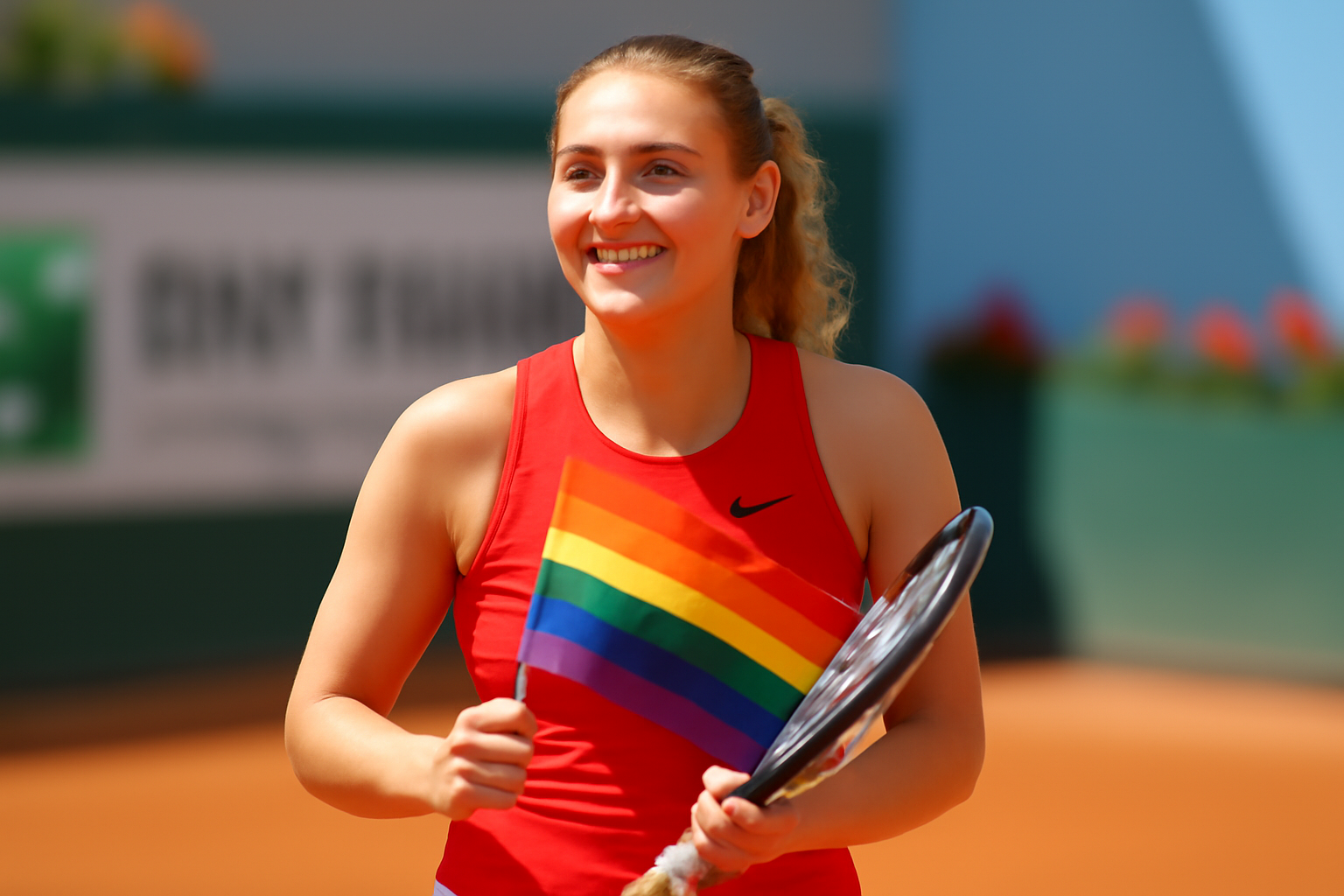
The French open: a stage highlighting LGBTQ+ in tennis
The French open isn't just about fierce competition; it's also a spotlight on LGBTQ+ athletes making their mark in this renowned tournament. This year, while we celebrate having two openly gay women in singles, there's still a noticeable absence in their male counterparts, sparking important conversations.Leading lights in women's tennis
First up, we have Daria Kasатkina, a top-ranked player who now calls Australia home after starting out in Russia. As she stands proudly as an openly gay player at number 17 in global rankings, she's not just playing tennis—she's taking a stand. Daria's decision stemmed from gaining permanent residency in Australia and her opposition against Russia's policies, both in terms LGBTQ+ rights and geopolitics. Her authenticity and openness have earned her widespread respect and support. Alongside her, Belgian star Greet Minnen, ranked 77th, came out in 2018 while in a relationship with fellow Belgian player Alison Van Uytvanck. Although their engagement ended, Minnen's commitment as an LGBTQ+ champion in tennis hasn't faltered. Van Uytvanck, who tied a knot with Emilie Vermeiren at last year's French open, shared love and authenticity live on this grand stage—showing how personal truth merges beautifully with professional excellence.The LGBTQ+ absence in men's tennis
Even with these strides in women athletes' visibility, men's tennis still lacks openly gay players. American player Emina Bektas, with a peak ranking at 82, didn't manage through this year's qualifying rounds. However, we've seen a groundbreaking moment with Joao Lucas Reis da Silva coming out as an openly gay active male player, now ranked 351st. While not yet on major tournament rosters, his story inspires many and highlights ongoing challenges faced by LGBTQ+ athletes in men's sports.Why men's tennis faces unique hurdles
So why are openly gay male players so rare? Well, tennis can feel like a lonely road. Players often don't have a tight-knit team or peer group like in other sports, leaning instead on personal coaches, which can make coming out even harder. There's also a gender factor at play. Studies show more women identify as LGBTQ+ than men, and sports are often more accepting towards queer women. This pattern isn't just in tennis; it's seen across many sports, with female athletes leading visibility and advocacy.Overcoming financial and cultural obstacles
Money talks, as they say, and financial pressures are a real barrier. Many ATP events are in places where homosexuality remains illegal, like UAE and Qatar, risking sponsorship and financial backlash. Even at last year's WTA Finals in Riyadh, Kasатkina had complex logistics ensuring safe accommodations with her girlfriend. It highlights how challenging it remains navigating this space as an LGBTQ+ athlete. Still, there's growing support within tennis. Players like Kasатkina and Minnen sharing their journeys directly impact others and help create a more open playing field.Striving towards a more inclusive future
The push towards inclusivity in tennis isn't over: each tournament and every player brave enough keeps that ball rolling. The hope? As we continue watching from our seats or screens, more athletes across all identities will step up and embrace their true selves, making tennis a truly welcoming arena.Related Posts
Viral 'Pronoun Protest' in Wyoming Senate Sparks Discussion
Wyoming legislator stirs controversy over pronoun stance A recent Wyoming Senate debate got people talking nationwide, all thanks in part due an unexpected protest from one determined constituent. Chairman Tim French, who's made a name opposing preferred pronouns, suddenly found himself at center stage after being caught in this viral sensation that questioned his voting record. The heated debat [...]
Celebrating Triumphs and Community in the LGBTQ+ World
This week's news roundup features a collection that's sure-to-put-a-smile-on-your-face: stories about resilience, love, and inspiring achievements in LGBTQ+ communities. If you're a fan like me and love hearing about strength and unity, you might want these positive vibes delivered straight your inbox. Subscribing our Good News email could be just thing! Uplifting stories and community action We [...]
Montana Enacts New Legislation Affecting Transgender Rights
```html Montana's governor has recently signed off on a series, leaving many residents in heated debate over transgender rights in their state. These laws have sparked plenty—both supporters rallying behind them and others staunchly opposing—making it a significant chapter in our country's ongoing conversation about LGBTQ+ rights. What's in these new laws? The fresh legislation has raised eye [...]